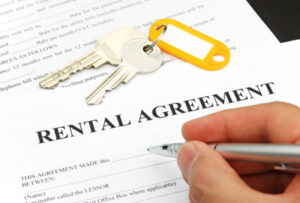RENTING
Renting a property can be an exciting but intricate process. Whether you’re a first-time renter or have experience, this step-by-step guide will help you navigate through the process smoothly.
1. Define Your Budget:
- Determine how much you can afford to spend on rent, considering other monthly expenses. Typically, your rent should be around 25-30% of your monthly income.
2. Research Locations:
- Identify neighborhoods that align with your lifestyle, commute preferences, and amenities. Consider factors such as safety, proximity to work, schools, and public transportation.
3. Create a Checklist of Requirements:
- Outline your must-haves and deal-breakers for a rental property, including the number of bedrooms, parking, pet policies, and any specific amenities.
4. Start Early:
- Begin your search well in advance of your desired move-in date. This allows ample time to find the right property and avoid making hasty decisions.
5. Search Online and Offline:
- Explore rental listings on websites, apps, and social media. Additionally, visit local real estate agencies, community bulletin boards, and ask friends and colleagues for recommendations.
6. Schedule Property Visits:
- Arrange visits to potential properties. Pay attention to the condition of the property, neighborhood, and any maintenance issues. Take photos and notes during your visits.
7. Review Lease Agreements:
- Carefully read and understand the terms of the lease agreement. Pay attention to rent amount, lease duration, security deposit, and any specific clauses regarding maintenance, repairs, or restrictions.
8. Check for Hidden Costs:
- Inquire about additional costs such as utilities, maintenance fees, and property taxes. Factor these into your budget to avoid surprises later.
9. Verify Tenant Rights:
- Familiarize yourself with local tenant rights and landlord responsibilities. This knowledge will empower you to address any issues that may arise during your tenancy.
10. Background Check and References:
- Be prepared for a background check. Provide necessary documents such as proof of income, references from previous landlords, and a personal or professional reference.
11. Negotiate Terms:
- If there are aspects of the lease that you’d like to discuss or negotiate, such as the rent amount or lease duration, don’t hesitate to communicate with the landlord.
12. Confirm Move-In Details:
- Clarify move-in logistics, including the date, key exchange, and any necessary inspections. Ensure all required paperwork and payments are in order.
13. Inspect the Property:
- Conduct a thorough inspection of the property before moving in. Document any existing damages and report them to the landlord in writing to avoid disputes later.
14. Set Up Utilities:
- Arrange for the transfer of utility services to your name. This may include water, electricity, gas, internet, and other essential services.
15. Get Renter’s Insurance:
- Consider obtaining renter’s insurance to protect your personal belongings in case of unforeseen events, such as theft, fire, or natural disasters.
By following these steps, you can streamline the process of renting a property and ensure a smooth transition into your new home.

